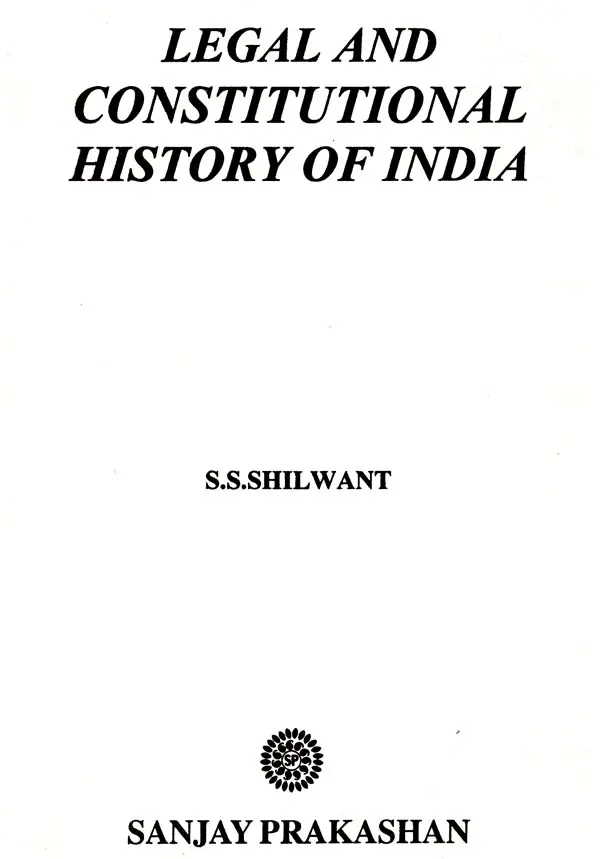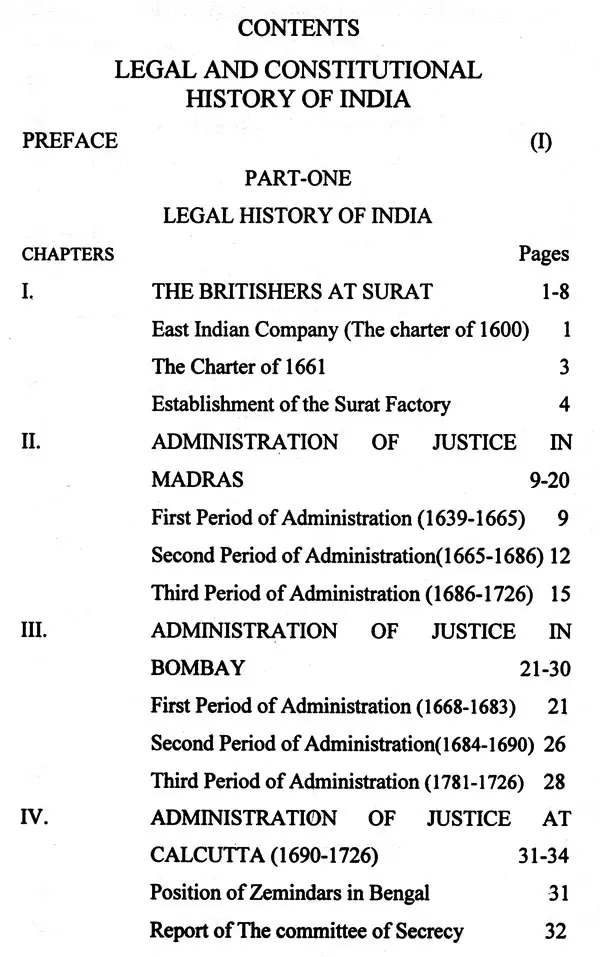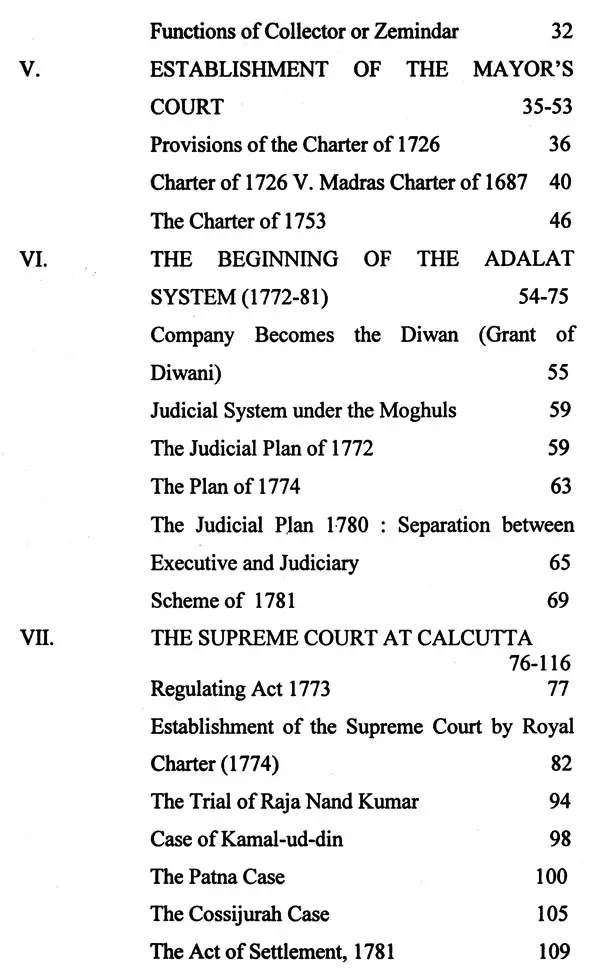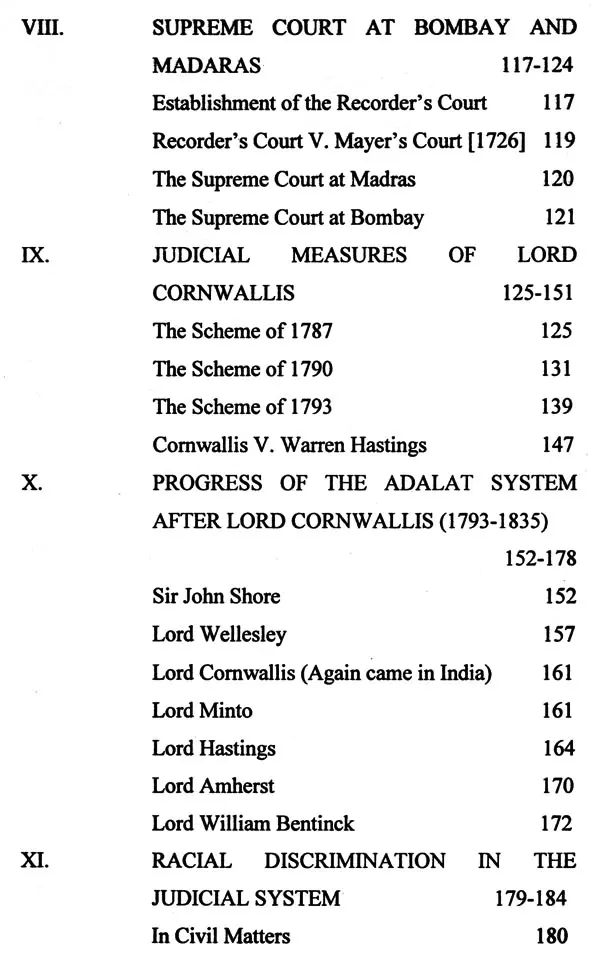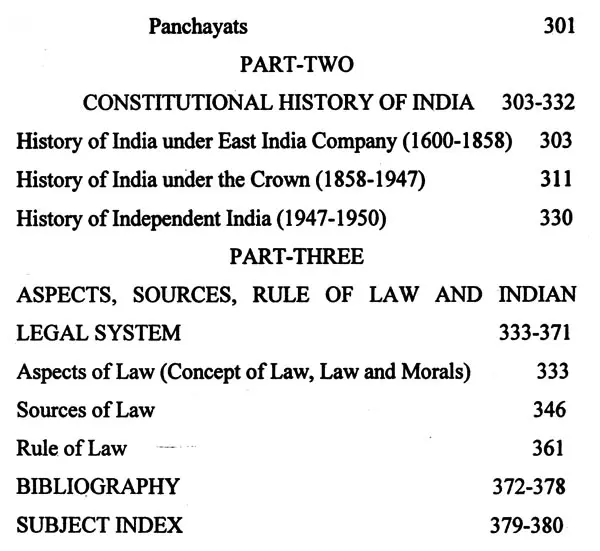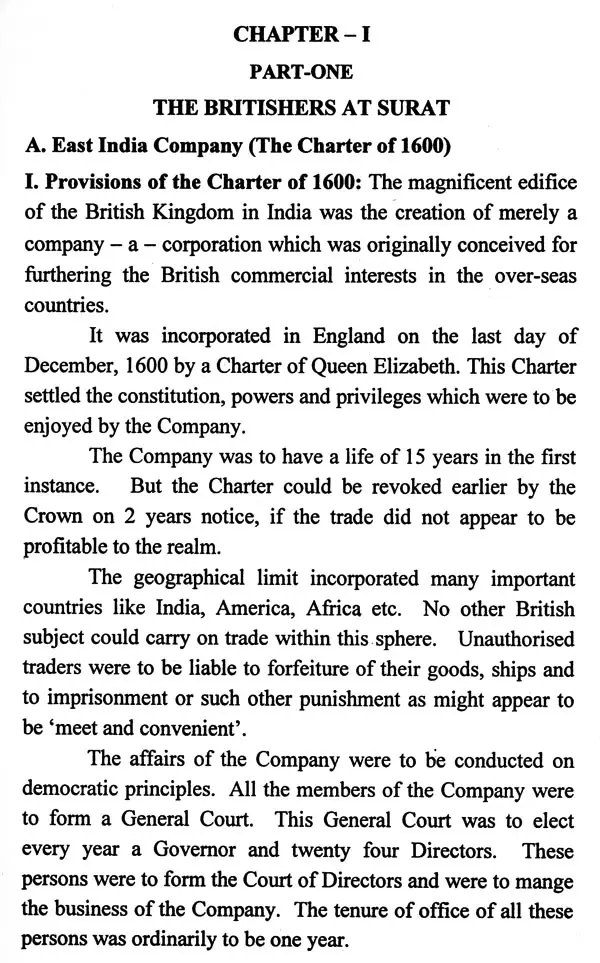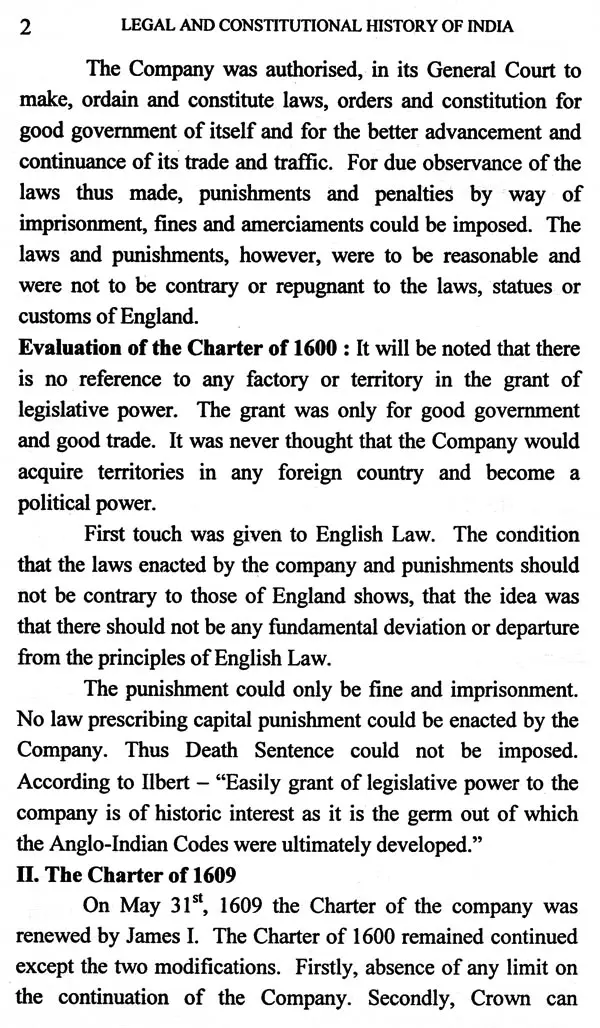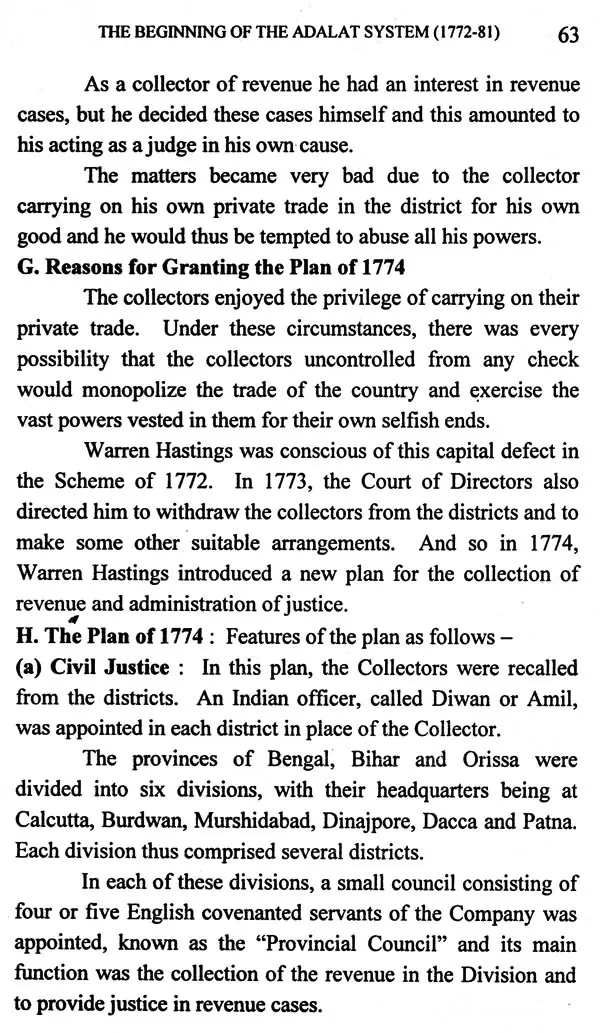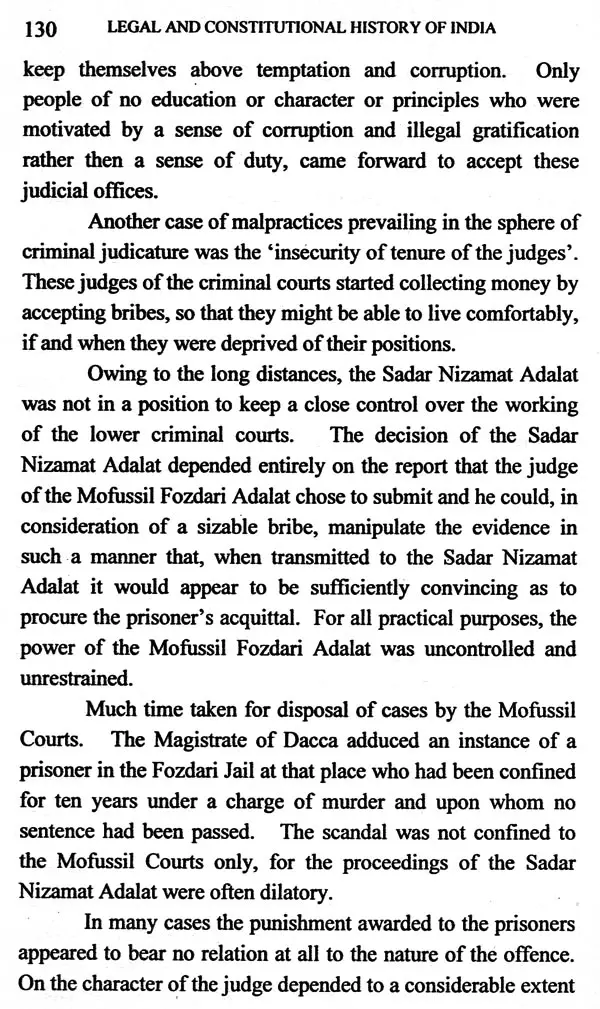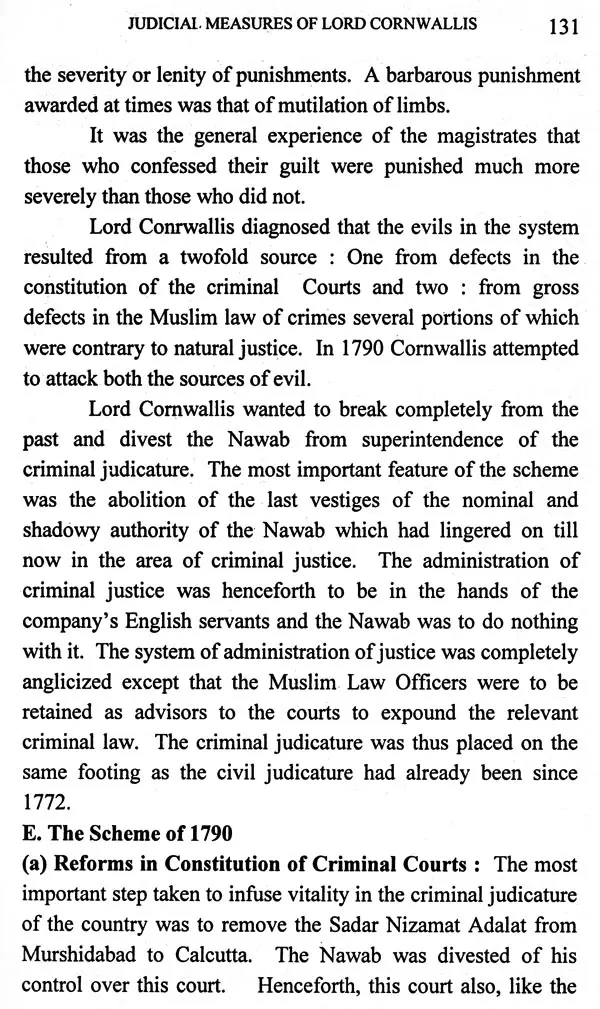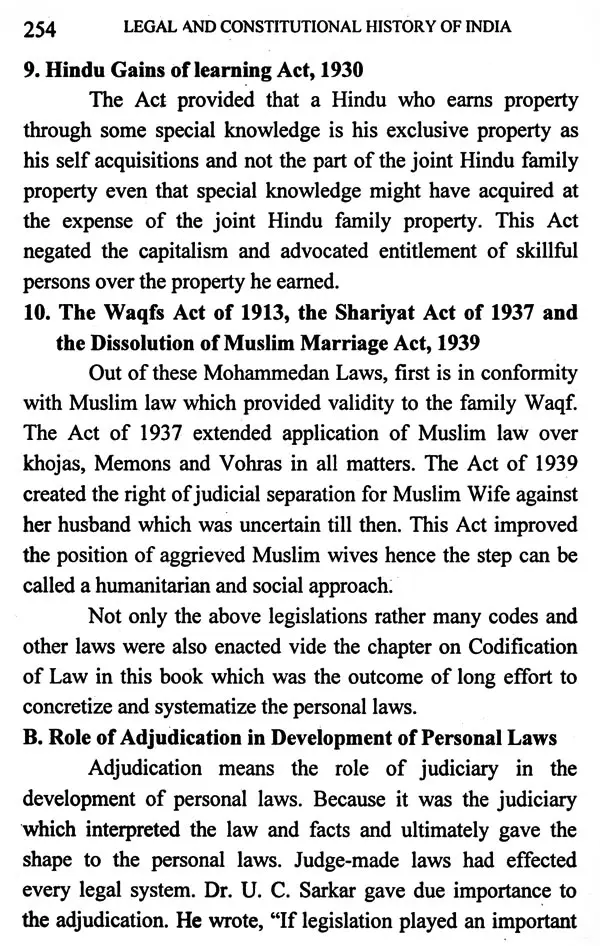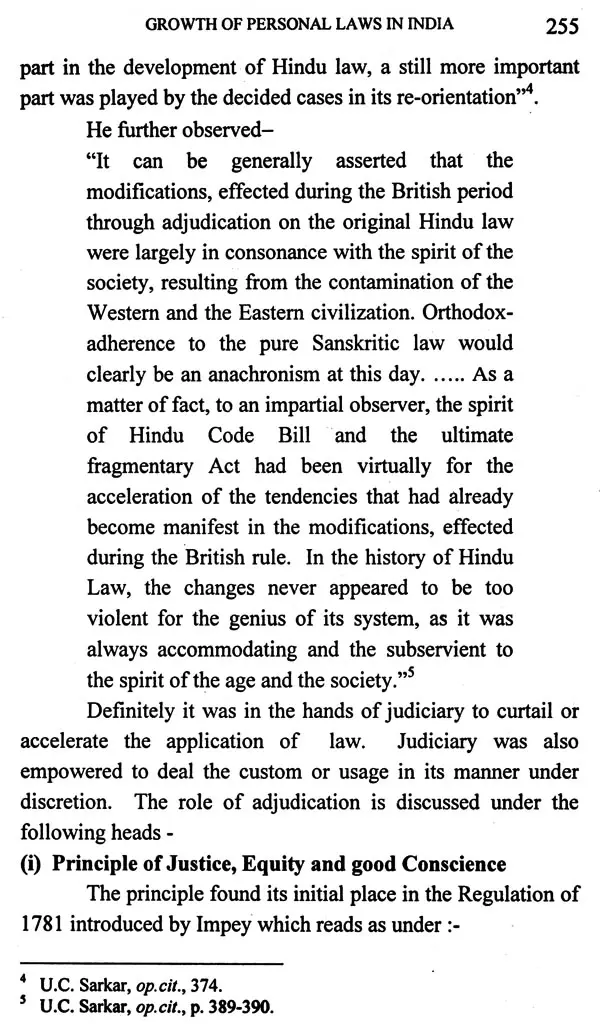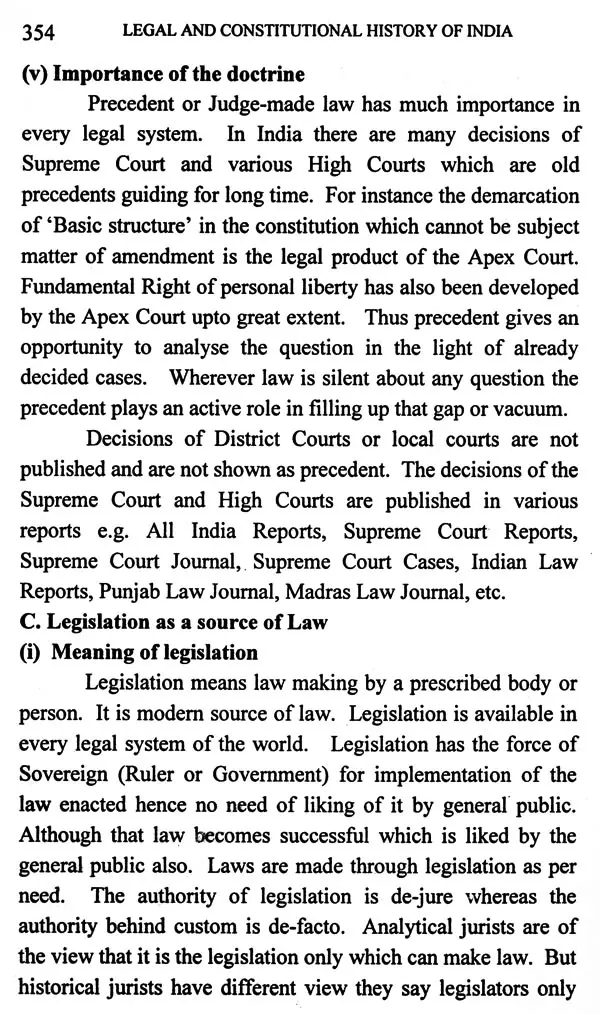
Legal and Constitutional History of India
Book Specification
| Item Code: | UAH785 |
| Author: | S.S. Shilwant |
| Publisher: | Sanjay Prakashan |
| Language: | English |
| Edition: | 2003 |
| ISBN: | 8174530916 |
| Pages: | 380 |
| Cover: | HARDCOVER |
| Other Details | 9.00 X 6.00 inch |
| Weight | 540 gm |
Book Description
The importance of the subject lies in the maxim i.e. 'source of everything is more important than the thing itself. To analyse and realize the present Indian Legal System, it is necessary to know the sourceful history from 1600 to 1950 during which there had been Rule of Company, Rule of King and ultimately Rule of Law took place. Why there was need of 'Rule of Law'? The answer is that before independence of the country, there were inequalities between Britishers and Indians; Hindus and Muslims; Men and Women and inter-se castes i.e. Brahmins and Sudras in the context of their legal rights and status.
For the first time a Government of the people, by the people and for the people came into existence on the Indian soil in 1947 as the genesis is reflected by the Preamble of the Indian Constitution as "We the People of India,.....
The history reveals initial and developing stages of the present writs. The present doctrine 'justice, equity and good conscience' traces its history from Court of Chancery in England and its application during British Rule in India. Why the Uniform Civil Code has been desired by the Constitution? The question has historical roots. The Legislative powers had been delegated by the British Parliament to Legislative Council of Dominion India and lastly vested in the Indian Parliament and State Legislature. The judicial powers were exclusively enjoyed by the Britishers and also kept monopoly on legal profession.
The present study focuses on the legal and constitutional process which culminated into present Indian Legal System in addition to the coverage of aspects, sources and Rule of Law.
Dr. S.S. Shilwant is teaching in Faculty of Law, Maharshi Dayanand University, Rohtak (Haryana) in India. As an exclusive ambition, he did LL.B. from Kurukshetra University, Kurukshetra; LL.M. from Panjab University, Chandigarh as a day scholar He did his doctoral research (Ph.D. in Law) from Maharshi Dayanand University, Rohtak.
Dr. S.S. Shilwant has practice experience as an Advocate in the Supreme Court of India. His rich contribution to the Department is the teaching of practical subjects viz. Moot Courts, Drafting, inter-alia. other subjects. He also devotes time in Legal Aid, Clinical Education and Lok Adalat programmes and has wide experience of attending National, International Seminars, Conferences, Workshops etc. along with Extra-Curricular Activities. His academic taste is witnessed by many research papers on different areas. published in renowned Journals. He also provides scholarly guidance to the research students working in various legal areas. In advancement of cultural literature, he is bestowed with God Gifted Hobby of lyrics-writing in six languages viz. Hindi, Urdu, English, Haryanvi, Punjabi and Rajasthani acquiring acclamation in Inland and Abroad. He is a member of F.W.A, Bombay and also approved writer by All India Radio.
I feel immense pleasure in presenting this textbook to the readers. The study is primarily meant for students, research scholars whereas it is also useful to advocates including those who have curiosity to know the historical development of Indian Legal System.
The endeavour has been made to place the material systematically, chronologically emphasizing in detail the pivotal turning points of legal and constitutional developments which culminated into fundamentals of Modern Indian Legal System. The attempt has been made to place the facts in easy sequential order, therefore, the whole evolution has been divided into three parts, first being the legal development, the second is constitutional development and the third contains the information regarding aspects, sources and rule of law.
I must express my heartiest gratitude to Professor R.K.Raizada, Professor C.P. Sheoran, Professor Ranbir Singh, Professor L.C. Dhingra, Professor P.C. Juneja, Professor S.K. Bhatnagar, Faculty of Law, Maharshi Dayanand University, Rohtak and Professor Hoti Prasad, Faculty of Law, University, of Delhi for their active co-operation, encouragement and enlightenment on some complicated issues. I am also thankful to my colleagues and friends who spared time for me to have necessary discussion on the issues involved in the book. I also express my emotions towards my family who helped me in the Study. Lastly, I express my gratitude to the Almighty Who gave me an occasion to complete this mission. Sh. Jai Parkash, Sh. Satbir Singh and Mr. Anand Mohan are also entitled to get my heartiest thanks due to their co-operation.
I hope the book will be useful for students, researchers and other intending readers who want to search on a desirous point.
Journey from Constitution of East India Company to the Constitution of Independent India has been well presented in the book with emphasising narration of Legal and Constitutional developments during the British Period from 1600 to 1950 along with a brief reference to Aspects, Sources and Rule of Law as the roots of Indian Legal System. Certainly, the subject is of great interest and importance to the Academicians and Advocates. The chronological and analytical study reveals the infancy of modern Judicial, Legislative and Administrative institutions with their grown up process leading to the present era.
Dr. S.S. Shilwant has presented a systematic and excellent work raising the curiosity and satisfying as well. I hope the book will be very useful to the students for whom it is primarily meant and also to the legal community as a reference book.
**Contents and Sample Pages**
